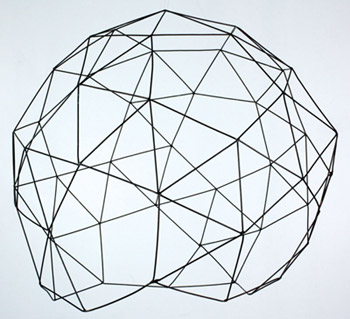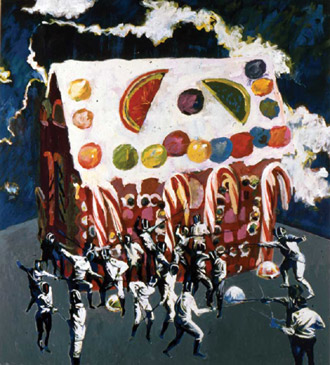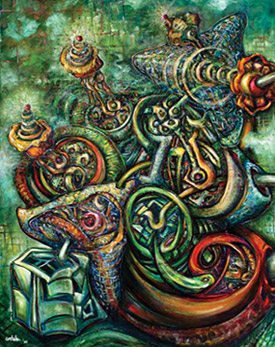Four New Fall Exhibitions
Target Wednesday After Hours

The Patricia & Phillip Frost Art Museum at Florida International University (FIU) will host the opening receptions for four major exhibitions: Embracing Modernity: Venezuelan Geometric Abstraction; Sequentia by Xavier Cortada; Selections from Anomie 1492-2006 by Arnold Mesches and La Habana Moderna in The Wolfsonian Teaching Gallery.
The exhibitions will open with a reception sponsored by Target on Wednesday, October 13 from 6 to 9 p.m. Target has teamed up with The Frost Art Museum to host an event series designed to complement The Frost’s exhibitions. These events give you a chance to meet contemporary artists and engage with controversial art, live music, talks, films, dance, and performance art, while providing an excellent opportunity to socialize with others interested in the arts.
Coming on view is Embracing Modernity: Venezuelan Geometric Abstraction which presents a historical overview of the origins of Venezuela’s abstract movement, focusing on its early development dating from the late 1940’s to the 1960’s. It includes works by artists who were responsible for the growth of the movement at the national and international levels, particularly in Paris where many of them resided at the time. The show, curated by Francine Birbragher-Rozencwaig and Maria Carlota Perez, features works by Omar Carreño, Carlos Cruz-Diez, Narciso Debourg, Gertrude Goldschmidt (Gego), Elsa Gramcko, Carlos Gonzalez Bogen, Gert Leufert, Mateo Manaure, Alfredo Maraver, Nedo, Ruben Nuñez, Alejandro Otero, Mercedes Pardo, Jesus Rafael Soto, Victor Valera, and Oswaldo Vigas, among others. 
Florida Artists Series: Selections from Anomie 1492-2006 features Florida artist Arnold Mesches. Throughout his 65-year career as an artist and professor, Mesches has woven many narratives into lush and virtuosic paintings. Beginning in late-1989 and until mid-1996 Mesches created the ANOMIE series, paintings and collages that included overt and subtle references to the overlapping histories and multi-cultural aspects of life. The 48 large acrylic paintings and 150 collages encompassed postmodern concepts with old master techniques and structures. In these works, large canvases of cinematic proportions, nothing is overt, images move and mingle freely through time, find their place conceptually, independent of actualities. In a broader sense, they are the conceptual admixtures of reality and the surreal Mesches has been striving for over these many years of painting and activism. 
Sequentia Xavier Cortada’s solo exhibit at the Frost Art Museum explores the sequence of events that make up life on the planet from the molecular to the monumental. The title of the exhibit also references a series of actions Cortada will set in motion to create of a unique strand of DNA. The artist will work with a molecular biologist to synthesize an actual DNA strand made from a sequence generated by museum visitors using Cortada’s art.
In “The Four Nucleotides”, the artist creates large scale “portraits” of Adenine, Cytosine, Guanine and Thymine– the four bases of a DNA strand that summarize all we are, were and will be. In Genetic Sequence, the artist invites museum visitors to randomly select a post card depicting one of Cortada’s four nucleotide oil paintings and attach it sequentially on strings hanging in the form of a helix from the exhibit gallery’s ceiling. In stringing the nucleotides along, they develop a DNA strand as a participatory installation. On view through January 2, 2011.



